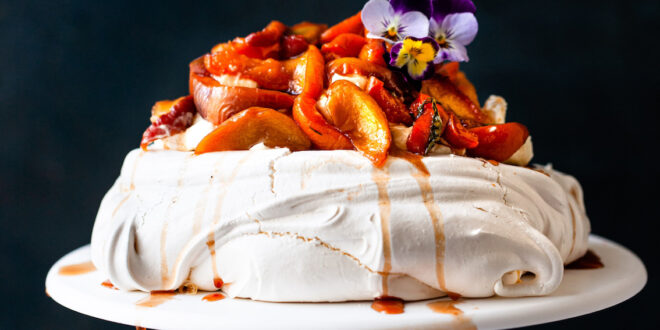There’s a reason why pavlova is such a Kiwi festive favourite – it’s a light, cool, alternative to the heavy Christmas pudding British colonials traditionally insisted on, even in their adopted Southern Hemisphere home. What’s more, pavlova has been gracing New Zealand dinner tables since the 1930s. It’s most definitely a Kiwi, rather than an Auzzie, invention. Biographer, Keith Money, discovered pavlova was created by a chef at a Wellington hotel on the occasion of a visit to New Zealand in 1926, by the Russian ballerina, Anna Pavlova. Anthropologist, Helen Leach, discovered the recipe for pavlova in a 1933 Kiwi cook book.
The first Kiwi Christmas dinner
Christmas dinner was first celebrated in New Zealand in 1642 by the explorer, Able Tasman, and his crew. They dined onboard their boat in stormy conditions close to D’Urville Island. Fresh pork and wine featured on the menu.
Strictly no celebrating!
The first Scottish Presbyterian settlers in New Zealand refused to celebrate Christmas. This was in keeping with their Church’s belief there was no proof Christ was born on December the 25th. Unless ‘Christmas Day’ was a Sunday, their churches remain closed. By the early 1900s, their attitudes to Christmas had softened.
Christmas – but no holiday
Prior to 1874, having a day off on December 25th wasn’t a given (unless you worked in a bank or Christmas Day fell on a Sunday). While some employers and provinces recognised Christmas Day as a holiday, many people were expected to work as usual, and hotels and shops often remained open!
Picnic preparations
Early settlers clung to their home-country Christmas traditions, baking and roasting (no pun intended!) even in the heat of mid-summer. From the mid 1900s, new potatoes and fresh fruit salads found their way onto the festive table, and picnics were seen as an acceptable (and sensible) alternative to dining indoors on Christmas day.
Santa’s in the shop!
New Zealand’s first in-store Santa took up residence for the festive period in 1894 when he appeared in Wellington’s DIC store. Other department stores soon followed suit. Toys (which were not traditionally stocked in department stores) gradually became a feature on the shelves at this time, and store ‘Christmas Grottos’ were soon an essential part of the celebrations.
Yes – it’s an elephant
At Christmas time, stores traditionally vied with each other to announce Santa’s arrival on their premises. To do this, some stores ‘brought Santa to town’ by rail, while others opted for cars, or even planes, to get him there. In the 1930s, a Christchurch store engaged the services of an elephant to transport Santa to its main doors
Christmas takes to the streets
Christmas street parades, with Santa making a star appearance, featured in New Zealand from the early 1900s. As well as providing festive entertainment for the public, they helped advertise the fact that Santa was in stores.
Christmas cards
Christmas cards were a valuable way for Kiwi colonials to rekindle relationships with family ‘back home’. These cards were often elaborate and embossed, and ironically, were manufactured in Britain, shipped out to New Zealand, and then posted back again as Christmas ‘gifts’. From the late 1880s, attempts were made by New Zealand publishes to print their own Christmas cards – but there was strong debate on just what these ‘summer scene’ cards should feature. Naturally, ferns were soon favoured.
The first Christmas Church Service
New Zealand recognises, as its first Christmas church service, the preaching on Christmas Day, 1814, by Samuel Marsden in the Bay of Islands. This site is now celebrated by the establishment of the Rangihoua Heritage Park. This aside, it is also accepted French explorers, visiting Doubtless Bay in the Far North in 1769, almost certainly celebrated Christmas Day when they were there.
However you look at it, a Kiwi Christmas is unique, and we are still creating our own festive traditions, today.









Join the Discussion
Type out your comment here:
You must be logged in to post a comment.